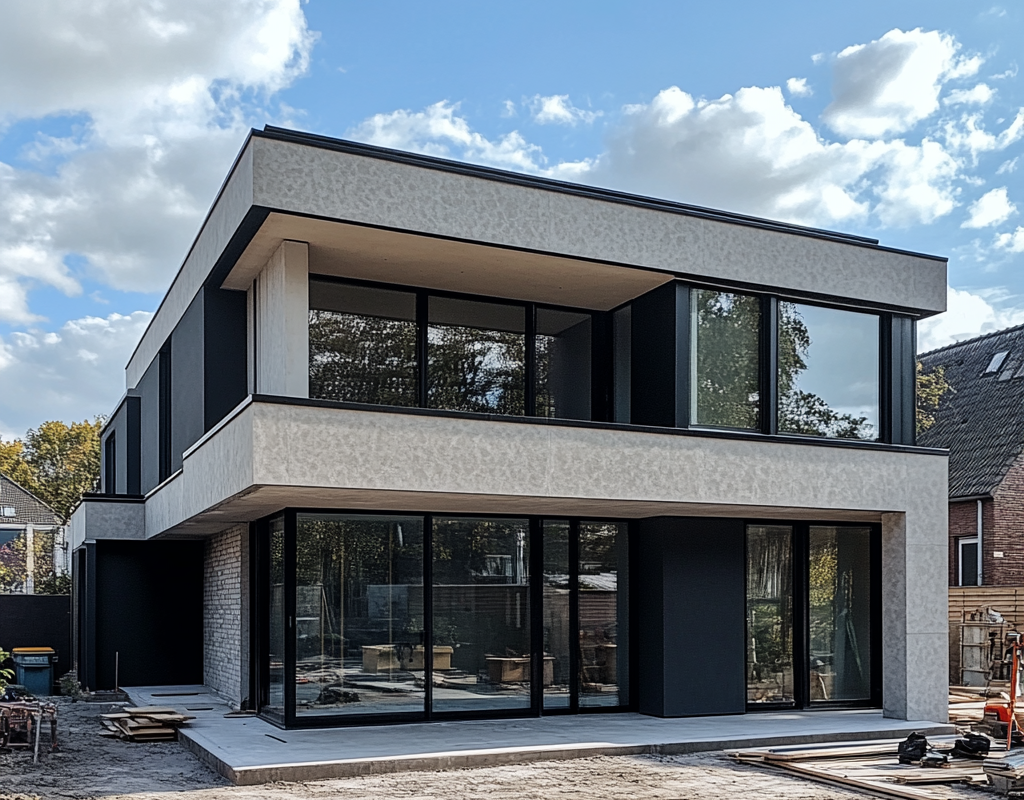Energy-efficient technologies and materials
Energy efficiency is one of the main principles underlying the construction of eco-houses. Modern technologies make it possible to create buildings that consume a minimum amount of energy for heating, cooling and lighting. One of the most popular solutions is the use of thermal insulation materials such as aerogel or cellulose insulation. These materials have high thermal insulation properties and help reduce heat loss, which significantly reduces energy costs.
In addition, windows with triple glazing and energy-saving coating are actively used in the construction of eco-houses, which allow you to keep the room warm in winter and prevent the penetration of excess heat in summer. The use of such windows improves the microclimate in the house and contributes to a significant reduction in heating and air conditioning costs. Energy-efficient technologies help not only save resources, but also reduce carbon dioxide emissions into the atmosphere, which makes eco-houses environmentally friendly and safe for the environment.
Renewable energy sources for eco-homes
Eco-homes often use renewable energy sources such as solar panels, wind turbines and geothermal systems. These technologies make it possible to obtain clean energy from natural resources, reducing dependence on fossil fuels and reducing the carbon footprint of the building. Solar panels are one of the most common solutions for eco-homes. They convert solar energy into electricity, which can be used to power household appliances and lighting. Innovative developments in this area have made solar panels more affordable and efficient, which contributes to their active use in modern construction.
Geothermal systems use the heat of the earth to heat and cool the house. This solution is ideal for regions with harsh climatic conditions, as it allows you to effectively maintain a comfortable indoor temperature all year round using heat obtained from the depths of the earth.
Smart home systems and their role in eco-construction
Smart home systems play an important role in the construction of eco-houses, providing automation and optimization of resource use. Smart technologies allow you to control lighting, heating, ventilation and other building systems using mobile applications or voice commands, which increases energy efficiency and ease of operation. One of the key elements of a smart home is an energy management system. It monitors the operation of electrical appliances and distributes energy consumption in such a way as to minimize its consumption during peak hours. This not only reduces utility costs, but also helps to reduce the load on the electrical network.
In addition, smart systems allow you to automatically adjust the lighting depending on the time of day and the level of natural light, which also helps to save electricity. Smart home technologies make eco-homes more sustainable and environmentally friendly, as well as provide a high level of comfort for their residents.
Innovative building materials
Innovative materials play a key role in the construction of eco-houses, as they reduce the environmental impact and improve the energy efficiency of buildings. One of these materials is wood from controlled forests, which is used in the construction of frame houses. This material is not only environmentally friendly, but also has high strength and durability. Another innovative material is recycled concrete, which is made using recycled construction waste.
Such concrete reduces the consumption of natural resources and reduces the carbon footprint of construction. Another example is the use of bamboo, which grows rapidly and has excellent mechanical properties, making it an ideal material for ecological construction. The use of these and other innovative materials helps to make the construction of eco-houses more sustainable and environmentally friendly, reducing the impact on nature and improving the quality of housing.
Water saving and waste recycling technologies
Water conservation and waste recycling technologies play an important role in the construction of eco-houses, helping to minimize water consumption and reduce the amount of waste thrown away. One of these technologies is the installation of rainwater collection systems, which can be used for garden watering, cleaning and other household needs.
Grey water circulation systems allow waste water from sinks and showers to be recycled for reuse, for example, for flushing toilets or watering plants. This significantly reduces the consumption of drinking water and reduces the burden on water resources. Recycling is also becoming an important part of eco-homes. Organic waste can be composted and used as fertilizers for the garden, and building materials are recycled and reused in new projects. These solutions help reduce the amount of waste that ends up in landfills and make eco-homes more sustainable.
Prospects for the development of technologies in the construction of eco-houses
Modern technologies in eco-house construction are advancing rapidly, with expectations that they will become even more innovative and accessible in the coming years. Key developments include:
- Integration of AI and IoT: Artificial intelligence and the Internet of Things are being used to create smarter, more autonomous buildings that can manage resources independently.
- New Eco-Friendly Materials: Biodegradable components and materials with enhanced thermal insulation properties are emerging, contributing to more sustainable construction.
- Use of Nanotechnology and 3D Printing: These technologies allow for the creation of more durable and environmentally friendly structures while also reducing costs.
- Focus on Sustainability: Sustainable development and environmental care are increasingly prioritized by individuals and companies, boosting the popularity of eco-homes and driving more investment in the sector.
- Future Technology Goals: Innovations will aim to enhance energy efficiency, lower costs, and improve living conditions in eco-friendly homes.
Q&A
Eco-houses utilize thermal insulation materials like aerogel, triple-glazed windows, and energy-saving coatings to minimize energy consumption for heating, cooling, and lighting.
Common renewable sources include solar panels, wind turbines, and geothermal systems, which provide clean energy and reduce dependence on fossil fuels.
Smart home systems automate resource management, optimizing energy use through lighting and heating controls, which improves energy efficiency and reduces costs.
Materials like recycled concrete, controlled forest wood, and bamboo are used to reduce the environmental impact and enhance the durability and energy efficiency of buildings.
Technologies include rainwater collection systems, grey water recycling, and organic waste composting, all of which help reduce water consumption and waste sent to landfills.



